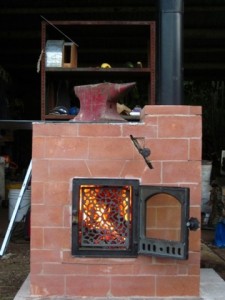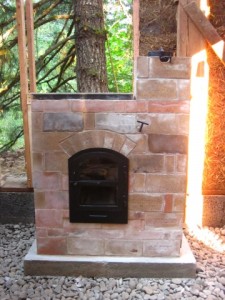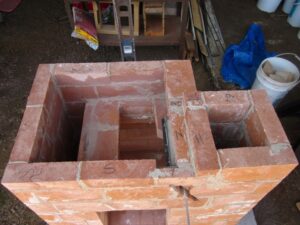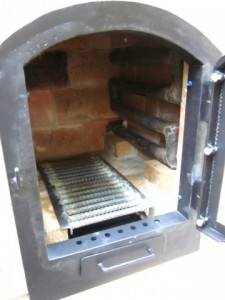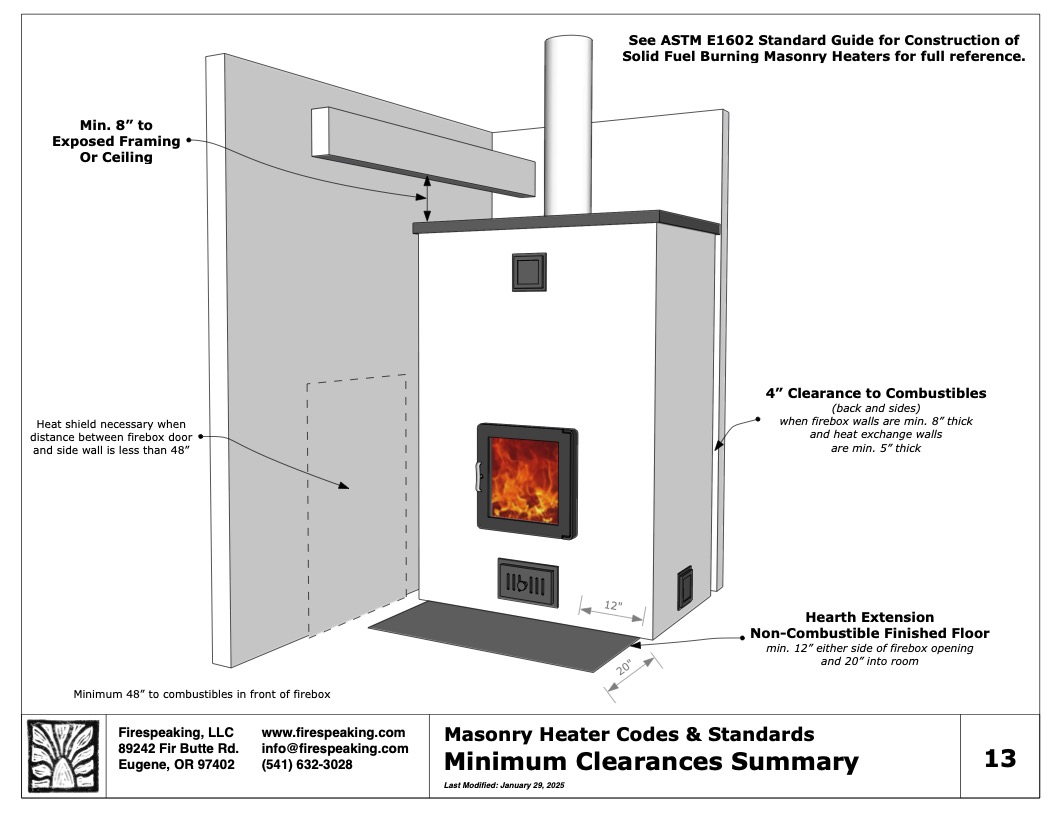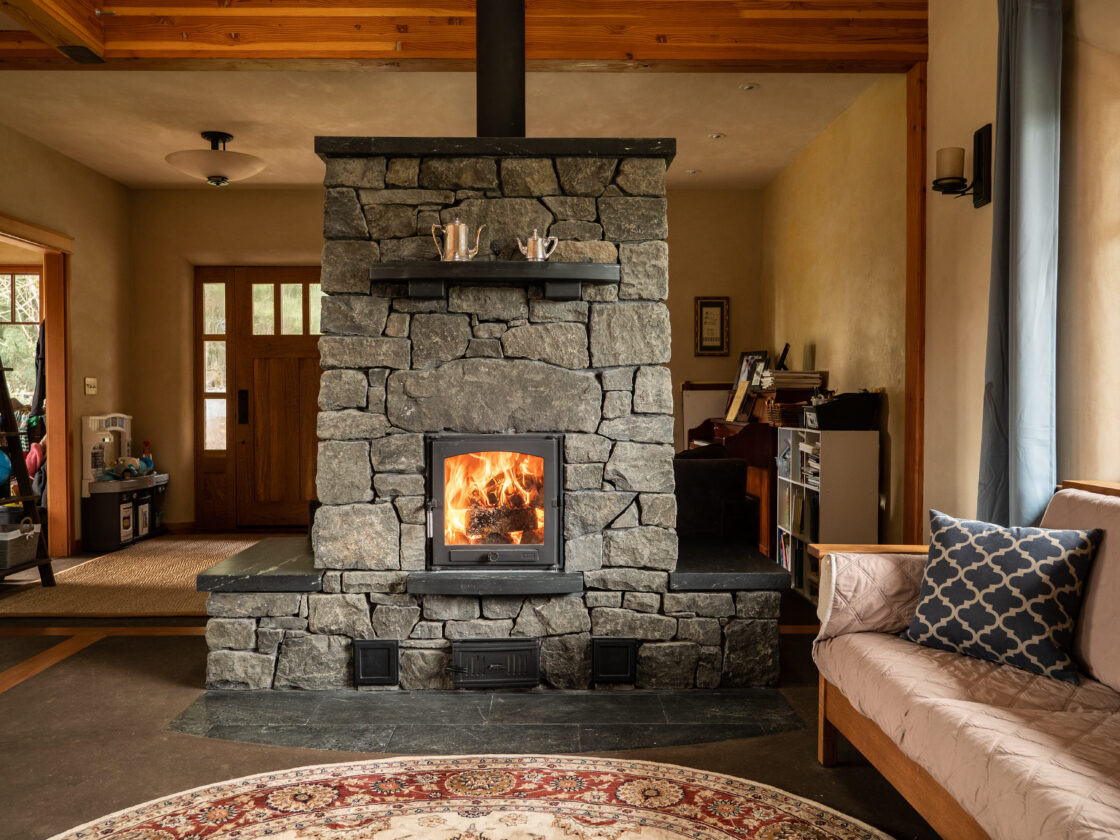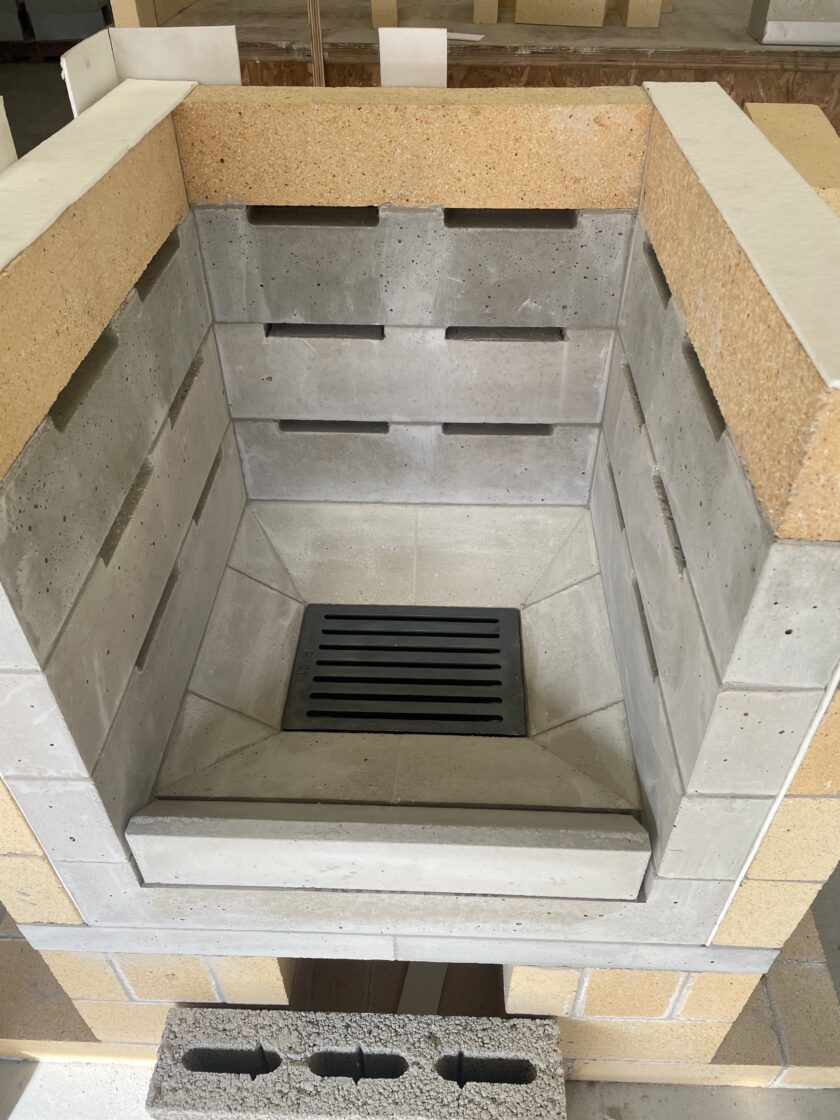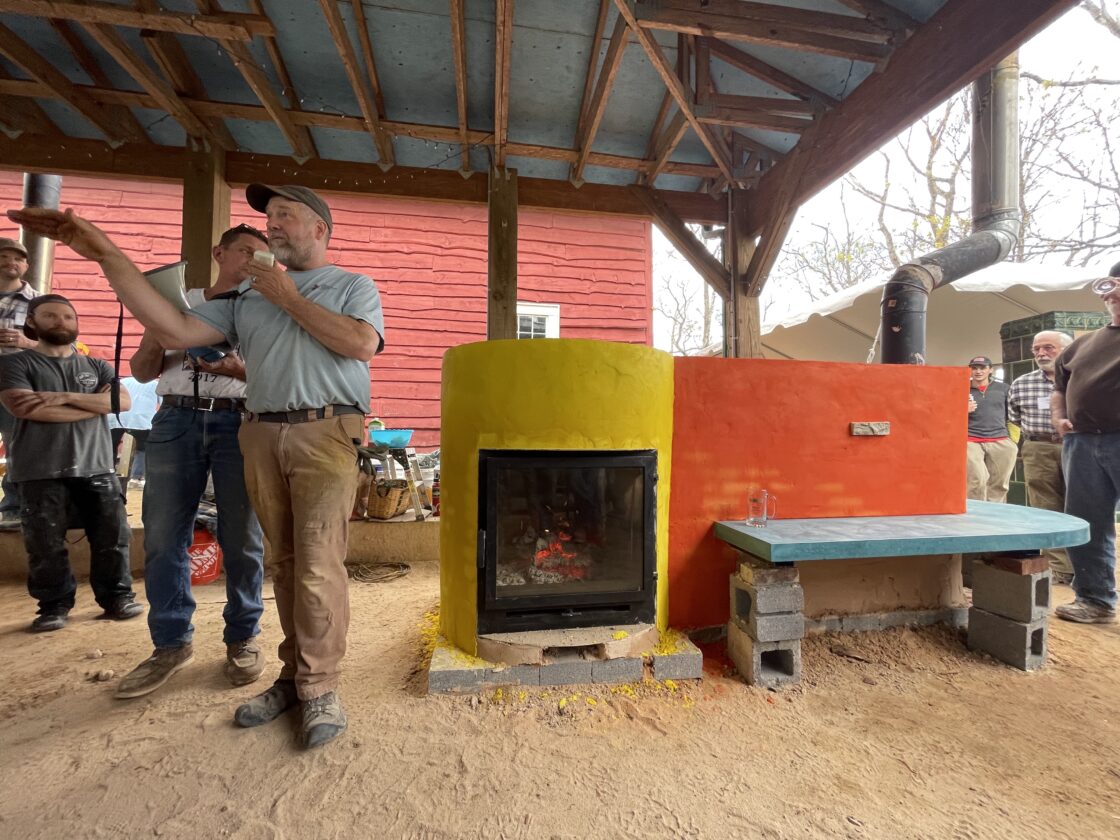Important note: I have preserved this post as-is for archival purposes. On-going development of the Cabin Stove is documented at The Cabin Stove Page.
A good part of the month of August has been dedicated to the research, development and construction of a small multi-functional masonry heater I have been calling “The Cabin Stove”. Eva and I have both been working as instructors in the first year of the Sustainable Shelter Workshop Series at Aprovecho Research Center in Cottage Grove, OR. The building that is the focal point for this course has been designed to be just slightly smaller than the legal requirements for permitting so that it can at the same time be a teaching tool as well as a laboratory for a basic building system that a group of associated natural builders in the Pacific Northwest considers to be a sound and ecological way of making a home.
The challenge of the design of the Cabin Stove was to come up with something that was very compact but also still resembled and functioned like a masonry heater. The design criteria included heating the small space, an efficient and clean fire, utility for cooking, heating water, combining some quick/immediate-releaseheat with slower retained radiated heat, relative ease of construction, not too expensive, aesthetically pleasing, and being as compact in size as possible. A very interesting process to try to combine all of these together.
Our test firings of the prototype in our shop were very promising. The fire burned well and had no problem making its way through the longer pathway, even notably when the door was open with the beautiful cast fire screen reducing the overall air intake to a moderate amount. I think the design meets most of the criteria listed above well with the exception possibly of cooking utility since this was compromised to accommodate other features.
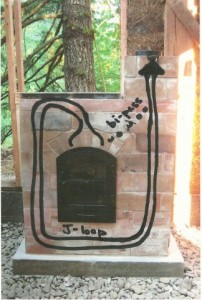 For the initiated, it is basically a very compact J-loop contraflow with a bi-pass that runs directly to the flu and allows it to function even as an open fireplace. Rather than insulating the top of the heater as is done often in masonry heater construction, there is a 1/4″ steel plate placed on top that serves as a cooktop and source of immediate heat. I am optimistic that the proportion of immediate and retained heat will be a good one for our bio-region where temperatures can fluctuate greatly during the day and from one day to the next. We are within but on the outer limits of the kind of climate that masonry heaters were designed for which explains the need for continued development and innovation.
For the initiated, it is basically a very compact J-loop contraflow with a bi-pass that runs directly to the flu and allows it to function even as an open fireplace. Rather than insulating the top of the heater as is done often in masonry heater construction, there is a 1/4″ steel plate placed on top that serves as a cooktop and source of immediate heat. I am optimistic that the proportion of immediate and retained heat will be a good one for our bio-region where temperatures can fluctuate greatly during the day and from one day to the next. We are within but on the outer limits of the kind of climate that masonry heaters were designed for which explains the need for continued development and innovation.
I did notice in firing the prototype that the big steel plate I had placed on it arced noticeably when hot so I welded a 3/16″ frame onto the Cabin Stove we built at Aprovecho though I am quite sure that the heat will play its funny games and have its own way with the final shape of the steel plate. Cast iron is almost certainly the way to go for the top although I do not know of a source of affordable custom sizes.
Although the heater at Aprovecho was designed to be a double-skinned heater with a compressed earth block and local stone veneer, I am very excited that we will first test the heater with a single skin. A neighbor has offered to lend his carbon-monoxide and air-quality monitors to test whether there are any dangers that result from expansion cracks in the single skin. Given our climate in Oregon, the prospect of building responsive single skin heaters is a very interesting one. (Note: the variation in the firebrick is because we used firebrick out of an old heater that had been taken down. The students re-milled each brick to cut away the old mortar to return the brick close to original dimensions).
I have recently been very inspired by the Open Source design philosophy so I share the rest of these photos of process in that spirit! Stay tuned for more on this heater and other research and endeavors. Click to see any images enlarged.
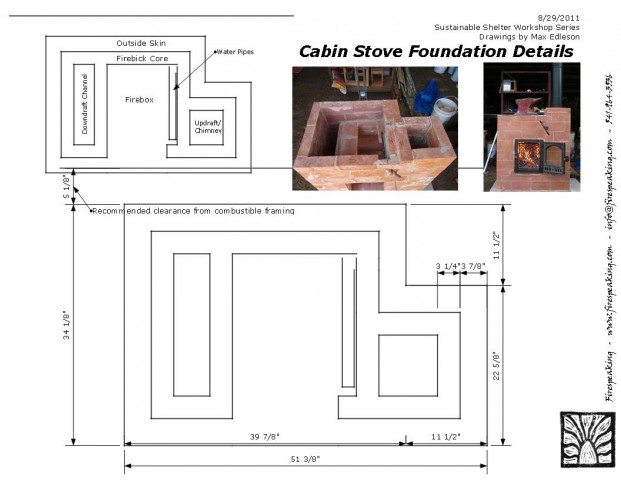
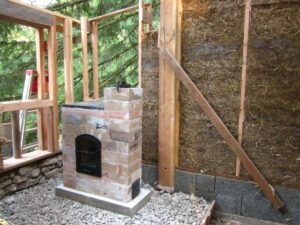 You can see some other details of the building, including one of the timber frame’s posts; the faswall and stone stemwall; and strawclay insulation packed in between Larsen-truss style framing.
You can see some other details of the building, including one of the timber frame’s posts; the faswall and stone stemwall; and strawclay insulation packed in between Larsen-truss style framing.

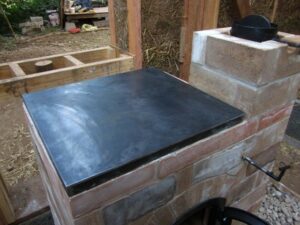 Custom-made heater hardware, made in our shop from scratch.
Custom-made heater hardware, made in our shop from scratch.
Details of Hot Water Serpentine. More on Plumbing for Thermosiphoned Hot Water Systems….
Make sure to read this more recent post on the Cabin Stove 2.0!
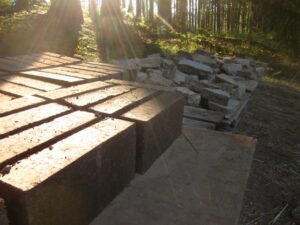 The light and surrounding forest were really exquisite when I took these shots of the veneer material. The compressed earth blocks were made by the students.
The light and surrounding forest were really exquisite when I took these shots of the veneer material. The compressed earth blocks were made by the students.
Find out more…..

